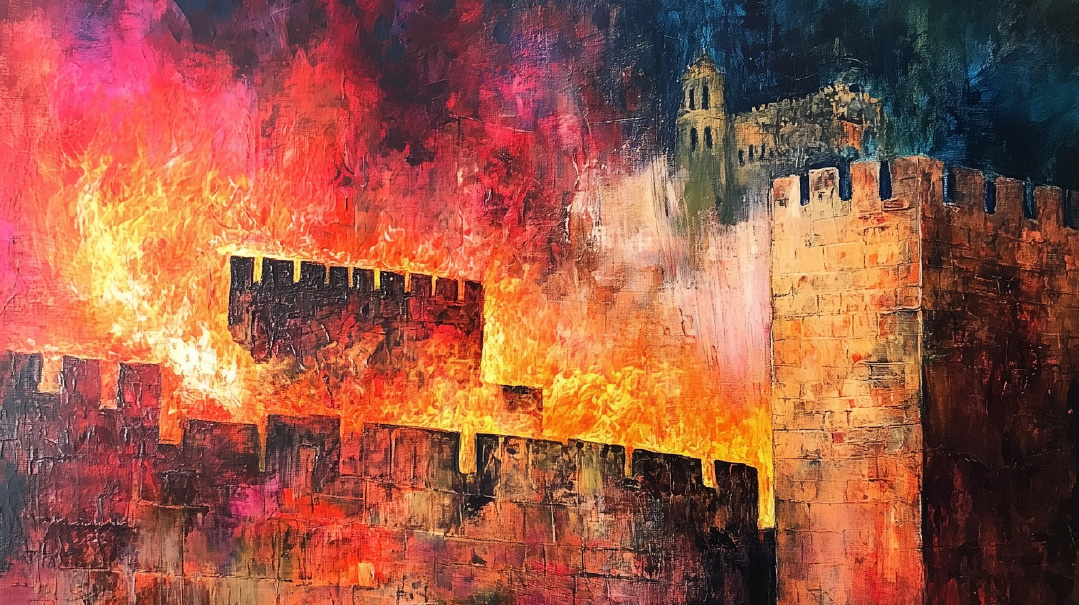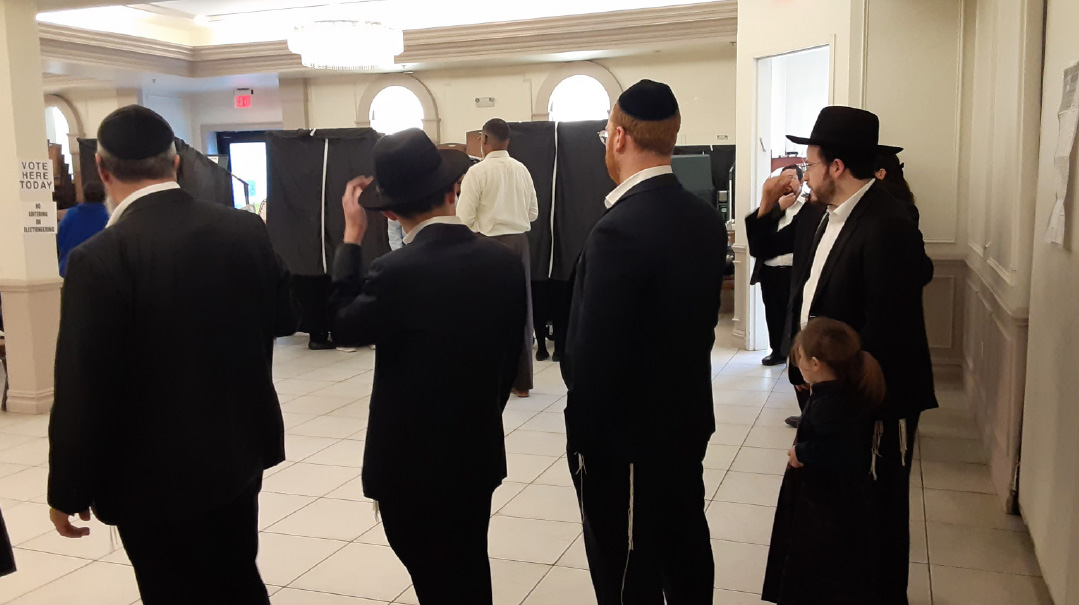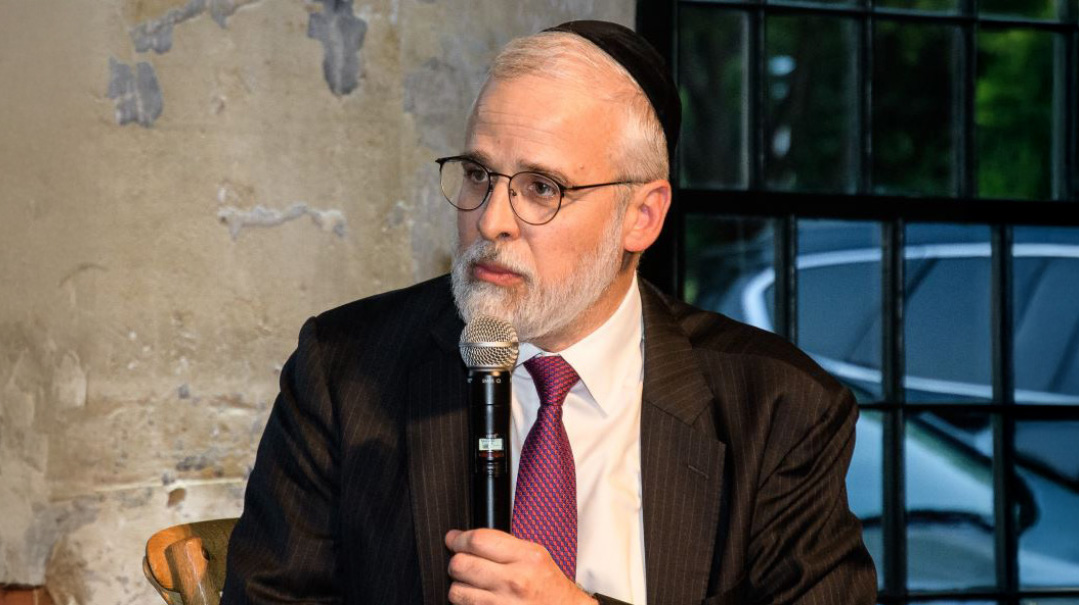Doubling Down

This could perhaps be the deeper meaning of “Nachamu, nachamu”

T
here is a well-known midrash that offers insight into the suffering of the Churban and the ultimate relief that we anticipate in better times. However, as many midrashim are, it is very cryptic and begs for an explanation.
Chatu b’kiflayim, they sinned doubly, as the pasuk says, “Cheit chatah Yerushalayim.” Therefore, they were doubly punished, as the pasuk says, “Ki lakchah miyad Hashem kiflayim.” They will subsequently be doubly comforted, as the pasuk says, “Nachamu, nachamu ami.”
What does it mean to “sin doubly”? Does it mean they sinned twice? Does it mean they sinned a lot, both quantitatively and qualitatively? If so, then it is not a matter of sinning doubly — it is simply an intensification of sin.
Furthermore, what is a double punishment? If it means their retribution was extensive, it has no relation to being doubled — it simply means a lot! And lastly, what is the double comfort of which Yeshayahu Hanavi speaks?
Perhaps we can shed some light on this Chazal with a very moving story that was shared with the world by Rav Yisrael Meir Lau, former chief rabbi of the State of Israel and currently rav of Tel Aviv. During the Yom Kippur War, 475 badly burned soldiers were brought to Ichilov Hospital for treatment. Four of them were in particularly bad shape, with burns covering almost 100 percent of their bodies.
As if the pain from the burns weren’t enough, the treatments were equally unbearable. One soldier who could not contain himself was screaming so loudly from the pain that it pierced the hearts of everyone in the building. As much as the staff tried to calm this brave soldier down, especially as it was causing even more distress to the other victims, it was to no avail.
Suddenly, the patient went completely silent. Rav Lau, who was present, feared the worst. There could be no reason for the screaming to abruptly stop unless the patient had passed away. To the Rav’s great surprise and relief, he found the soldier sound asleep. His serene look completely belied the incredible pain he had been suffering just moments before.
What really happened? The patient’s mother had approached her son’s bedside and found one small area of uninjured skin. She began to massage the area and soothed him, saying, “Ima is here, relax my child, relax.” She repeated it over and over, holding back her own tears, until her son fell into a calm sleep.
Rav Lau, after returning home early the following morning, shared a new insight that he gleaned from this moving scene with his rebbetzin. In Yeshayahu (chapter 66) the Navi says, “Just as a man is comforted by his mother, so too I will comfort you.” From all the metaphors the Navi could have chosen to describe comfort, he chose this one, that of a mother and her child.
“Last night,” the Rav continued, “I understood this in greater depth than ever before. Nothing was able to calm this burn victim — not morphine, not pleading, nothing. Only when his mother came with her incomparable love and soothed him as only a mother can was he able to find peace and fall asleep.”
Let us return now to our opening midrash. The midrash tells us that the Jews “sinned doubly.” This can be explained as follows. Every sin has two components. There is the physical action of the sin, which intrinsically contains a defiance of the will of Hashem. Then there is the second component, the change that overcomes the person and turns him into a chotei — a sinner. And the more he sins, the more it brands him as a chotei.
And just like there is a person who tells an occasional white lie — as opposed to the serial manipulator of the truth, a.k.a. a liar — so, too, there is the occasional transgressor, and then there is the sinner. There is the one who gets upset from time to time, and there is the baal ka’as. It is his identity. Not only does the sin become permissible in his eyes, it infuses his personality and very essence.
As Pirkei Avos teaches, aveirah goreres aveirah, one sin drags its victim to the next one, until he is transformed into a completely different being both inside and out. The Ohr HaChaim Hakadosh, in his well-known entry on ir hanidachas in parshas Re’eh, writes about a conversation he had with a Yishmaeli executioner. He shared with the holy Ohr HaChaim that every time he carried out his job, he became even more bloodthirsty than before to kill again. It completely transforms him into “an executioner.” This happens not only to those who kill for a living, but also to those who routinely practice middos ra’os or aveiros.
The idea here is that “sinning doubly” means that, in addition to the action of the sin, the performer transforms into something different, something lower and more sinister than what he had once been.
This is essentially what the Gemara in Nedarim (81a) is teaching when it tells us that the destruction of the Beis Hamikdash occurred because “they did not bless the Torah first.”
The Bach explains that this was an indictment of their overall approach to performing mitzvos. Engaging in learning Torah is intended to bind our neshamos with kedushas Hashem. The mitzvos are intended to permeate our very bones, to the point that our physical selves can serve as a merkavah and resting place for the Shechinah. This in turn has an impact on the entire world.
They failed in that mission and learned for their own benefit. There were people who followed the rules of the Torah when conducting their business, but they did so superficially; it didn’t affect them on a deeper level. Also, many people learned Torah, but it was merely to show off their chochmah. The Torah wasn’t in their bones.
Their beings had been transformed into those of “sinners,” and their failure to internalize the kedushah of the Torah barred them from climbing out of this classification.
Moreover, this failure to internalize the Shechinah caused it to depart from this world and leave us bereft of a Beis Hamikdash, a home down here for the Shechinah to inhabit. This is one interpretation of “Shechinta b’galusa.” When we drive the Shechinah out of our midst, we leave it no place to reside other than back up in Shamayim. Hashem is demanding internal kedushah from us, and if we do not achieve it, the kedushah will go back up to the Heavens where it can comfortably reside.
Mitzvos are not merely lists of dos and don’ts. They were made, as Chazal mandated, l’tzaref bahen es habri’os, to turn us into more sensitive and finer individuals. They must impact our sense of kedushah, tzniyus, and love for Hashem.
Rav Zev Leff related an anecdote (Festivals of Life, p.266) that shows how people can get so caught up in the details of a mitzvah and completely lose sight of how that mitzvah is intended to affect us. Rav Shraga Feivel Mendlowitz was the guest of a certain individual for the Friday night seudah. Upon arriving at the host’s home with his host, they found that the hostess had fallen asleep from the exhausting Erev Shabbos preparations and had failed to awaken in time to finish setting the table. The host, obviously embarrassed in the presence of his illustrious guest, berated his wife for her irresponsibility. He especially berated her for not covering the challos.
How absurd this scene is, thought Rav Shraga Feivel. One of the reasons we cover the challah is to protect them from being “embarrassed” when the brachah over the wine is made before the more important hamotzi. I have yet to see an embarrassed challah, he mused. The custom is there to awaken the awareness in us that if one should not embarrass even an inanimate object, then all the more so not a human being.
And here is this man, who embarrasses his poor wife for not covering the challos. The host was concerned about the minhag but totally ignorant of its implication and the greater will of Hashem that is revealed in that practice. Clearly this was not an action that would have contributed to binyan Beis Hamikdash. Quite the opposite, and a good illustration of where the Bach’s words were directed concerning mitzvos in general, not just learning Torah specifically.
The pasuk in Megillas Eichah uses the expression, “Tumasah b’shuleha — her sin was on her hem (of her clothing),” in describing the low level to which we had sunk. People are easily recognizable and sometimes even identifiable by the clothing they wear. It is not hidden, but out in the open for all to see. Sadly, we were wearing our aveiros on our sleeves and could immediately be identified as what we were inside — not occasional sinners, but the type whose aveiros take over the entire persona.
This is what Chazal understood as double sinning. For that, they were punished double in kind — not only for the actual sin but also for the damage they had done to their neshamos in the process.
What that secondary punishment is would of course be up to Hashem to decide. But as we know from the tochachah in parshas Bechukosai, from the mere attitude of a behavior of keri — a casual and lackadaisical relationship with Hashem — we are treated in kind with a lack of Hashgachah pratis that appears to us as keri from Hashem’s side as well. It is all-encompassing and not necessarily limited to one particular act of retribution. It is indeed a frightening and painful consequence of an easygoing attitude in avodas Hashem. This is reserved for those whose entire personality has become one of a chotei, Rachmana litzlan, may Hashem have mercy.
Once we turn the corner and learn the messages of churban, and seek to rectify its cause, it is time for nechamah. The word nechamah, although usually translated to mean consolation, has a deeper meaning than simply feeling comforted from a sense of mourning. We find in the Chumash that when Hashem decided to bring the Great Flood to the world, it says, “vayinachem Hashem,” which simply translated means Hashem had a change of heart for the creation of mankind.
Of course, it is not to be taken literally when speaking of Hashem. But one thing was for sure —there was about to be a change effected in the world, which was now on the precipice of total oblivion. The word nechamah, the way it is more commonly used, also implies a change of heart, a change of emotion. One goes from sadness and misery to a refreshing change of heart and feeling of comfort and menuchas hanefesh.
This could perhaps be the deeper meaning of “Nachamu, nachamu.” Not only was Hashem comforting us by accepting our newfound resolve to correct our actions that brought about churban, He was also effecting an inner change in us. He was recognizing our attempt at changing ourselves from the inside, purging ourselves of the label of chotim and becoming bnei aliyah once again. Indeed, the Navi compares Hashem’s comfort to that of a mother toward her child. It is loving and soothing on the inside, perhaps even more significant than making the pain go away on the outside.
It is this sense of inner tranquility that the Navi is speaking about. We were not just occasionally sinning on the surface, but wounded on the inside as well to the point of being called chotim. It permeated our very being and changed us completely to the point that we were distanced from Hashem and forced to suffer the consequences.
The Navi was now telling us, not anymore. “Nachamu, nachamu ami,” Hashem in His ultimate love and kindness is now assisting us in a rebirth of our sullied neshamos, as the Gemara teaches us, “Haba l’taheir mesayin oso — one who wants to purify himself will receive Heavenly assistance.” It is a cause for great relief and celebration; Shabbos Nachamu has traditionally been observed as one of happiness and joy, as mentioned in the seforim hakedoshim. It is the beginning of our healing process, as Hashem Himself is attesting to.
We have acquired the ability to undergo a great spiritual change, one that we can only hope to maintain and build upon with the Yamim Noraim right around the corner. We need to take care not to lose that opportunity in the three weeks between Tishah B’Av and Rosh Chodesh Elul, despite the relaxed atmosphere that bein hazmanim and vacation season bring. Our neshamos have been elevated and sensitized to the ever-greater aliyah in store for us come Elul.
We are healing and changing ourselves for the better, and can once again feel the loving embrace of Hashem as we attempt to bring His Presence back into our very selves as it was when the Beis Hamikdash stood. Let us realize that day once again when it makes its return bimheirah b’yameinu, amen.
(Originally featured in Mishpacha, Issue 1023)
Oops! We could not locate your form.







